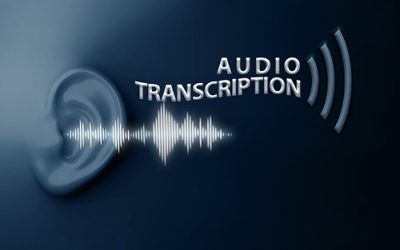Focus groups are an important tool in qualitative research, which aims to obtain data by analyzing the experiences of individuals or groups. Focus group discussions allow the researcher to collect data by observing, listening to, and learning from the participants. Multiple focus groups are often conducted to obtain accurate data. Focus group transcription services are used to create an accurate record of what the participants said during the session. What makes focus groups unique is that the data they generate would not be available without the discussion. Analysis of focus group data involves organizing and interpreting the verbal and behavioral data to answer the research question. The focus group transcript is used to create a record of the conclusions that can be drawn.
Analyzing Focus Groups – Key Considerations
The focus group analysis process is guided by several considerations: the number of focus groups, categories of participants, their locations, and other demographic factors. For effective analysis:
- Compare data within a focus group and also across groups with similar respondents.
- Know the participants and the topic. Ensure that the participants represent your target group. This is important to make comparisons, understand associations, and interpret comments. But be flexible in your thinking, as things may have evolved over time.
- Focus on key questions that are the basis of the study.
- Observe and interpret all factors in the communication such as body language, facial expressions, gestures, and tone of voice.
Transcription: The First Step in Focus Group Data Analysis
Transcription of the discussion is the first step in analyzing focus group data. Transcribing the entire conversation not only support further analysis but also provides a permanent written record of the group discussion that can be shared.
- Verbatim transcription: As the main aim of focus group interviewing is to learn respondents’ views about a particular topic, it’s crucial to capture every word and utterance. The transcript should include the “uhms”, “uhs”, or “ahs”, background noise descriptions, and non-verbal communication. Include incomplete sentences, parts of words, half-finished thoughts, odd phrases, and other aspects of spoken words in a group discussion. Include collective responses such as applause that follows a comment. Digital transcription service providers recommend making video recordings of focus groups. This will allow the transcriptionist to deliver error-free output by documenting non-verbal communication as well as to lip-read and check specific parts of the discussion.
- Identify respondents: It is difficult to identify speakers in large focus groups. If anonymity is not required, use the participants’ names. Thanking each participant by name after their dialogue is an effective way of ensuring that you have identified them correctly. If you want to maintain speaker anonymity in the transcript, label the participants as A, B, and so on.
- Use timestamps: Timestamps improve the quality of transcription and make analysis easier. Inserting markers to show the time in the transcript shows where the text is found in the video or audio file. Video-to-text transcriptions that include timestamps allow users to quickly review or listen to particular part of conversation or inaudible words — without having to view or listen to the entire video/audio file.
Here are two recommendations to improve the quality of focus group transcription:
- Since focus group data analyses is focused on finding a meaning in the nature of participants responses to the questions in the discussion, make that this is transcribed. Transcribing the questions that were asked is logical and necessary and will keep the information organized for effective analyses.
- Don’t make changes or correct grammar when transcribing the discussion. Adding words or over-editing the transcript would be counterproductive to the analysis.
Once the data is collected, participants’ responses have to be interpreted and synthesized into useful information.
Analysis of Focus Group Data – Cut-and-Paste Method
There are many methods of analyzing focus groups. Here, we discuss the steps in the simple cut-and-paste approach that businesses often use in market research:
- Take a printout of the transcript.
- Read the transcript and locate the sections that are related to the research question.
- Categorize the major topics and issues.
- Use a highlighter system and symbols to mark the different topics in the text.
- Use Word Processing to cut each piece of the coded material and organize the segments so that all material relevant to one topic is clubbed together.
- Incorporate the various pieces if transcribed text in the interpretative analysis.
Content analysis can be done once you organize the material. This involves making valid inferences from the text, which includes both verbal and non-verbal content.
Transcribing multiple focus groups can take a lot of time. The practical approach would be to rely on professional focus group transcription services. Experienced companies provide transcripts in rapid turnaround at affordable rates.




